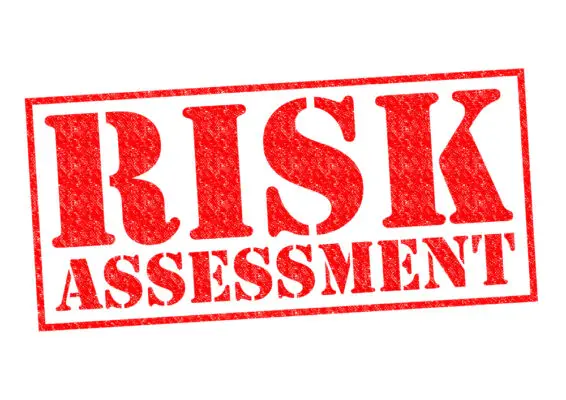The Gramm-Leach-Bliley Act (GLBA) is a federal law in the United States that regulates how financial institutions handle the private information of their customers. Under GLBA, financial institutions are required to implement safeguards to protect the privacy and security of customer information.
One crucial step in complying with GLBA is conducting a risk assessment. This process helps organizations identify and assess potential risks to customer information’s confidentiality, integrity, and availability.
Conducting a comprehensive risk assessment, financial institutions can identify vulnerabilities, prioritize risks, and implement appropriate controls to mitigate and manage those risks effectively.
Failure to comply with GLBA can have severe consequences, including financial penalties and damage to an organization’s reputation.
Therefore, financial institutions must understand and implement the necessary steps to conduct a thorough GLBA risk assessment.
This article will provide a detailed overview of the GLBA risk assessment process, highlighting its importance and the potential consequences of non-compliance.

What is the Gramm-Leach-Bliley Act (GLBA)?
The Gramm-Leach-Bliley Act (GLBA) is a federal law that requires financial institutions to protect the privacy and security of customers’ personal information.
One important provision of the GLBA is the Safeguards Rule, which outlines the requirements for protecting customer information. The Safeguards Rule consists of nine elements that financial institutions must implement, including risk assessments, information security policies, employee training, and oversight of service providers.
The Safeguards Rule applies to all financial institutions defined as ‘financial institutions under the GLBA, including banks, credit unions, and securities firms.
In 2023, the Federal Trade Commission (FTC) plans to update the Safeguards Rule to address emerging security risks and ensure financial institutions take appropriate measures to protect customer information.
What are the nine elements of the Safeguards Rule?
Implemented in 2002, the Safeguards Rule encompasses nine essential elements that must be adhered to in order to ensure compliance with the GLBA.
The first element is the risk assessment process, which involves identifying and assessing potential threats and vulnerabilities to customer information.
The second element focuses on implementing security safeguards, including access controls and encryption, to protect against unauthorized access to customer information.
Physical safeguards, such as locks and alarms, constitute the third element.
The fourth element is adopting security policies and procedures that protect customer information.
The fifth element entails appointing an individual or team responsible for developing and implementing the security program.
The sixth element requires periodic review and adjustment of the security program.
Finally, the last three elements involve addressing external risks, conducting ongoing employee training, and ensuring compliance with security requirements.
By adhering to these elements, organizations can establish a robust framework for safeguarding customer information in accordance with the GLBA.
Who does the Safeguards Rule apply to?
Applicable to a wide range of entities, the Safeguards Rule extends its reach to organizations that handle customer information, ensuring comprehensive protection measures are in place.
Under the Gramm-Leach-Bliley Act, financial institutions must comply with the Safeguards Rule, including banks, credit unions, and securities firms.
Additionally, the Rule applies to institutions that provide various financial products and services, such as insurance companies, mortgage brokers, and consumer reporting agencies.
Beyond the financial sector, the Safeguards Rule also encompasses organizations involved in student financial aid, ensuring the security of customer information in educational institutions.
To ensure compliance, entities subject to the Safeguards Rule must implement specific measures, such as physical security to protect against unauthorized access, multifactor authentication to verify user identities, and third-party security assessments to evaluate the security of customer information handled by external vendors.
These requirements are essential for safeguarding customer data and maintaining the integrity of business operations.
What is required under the Safeguards Rule?
Organizations subject to its requirements must establish and maintain a comprehensive information security program to ensure compliance with the Safeguards Rule.
This program includes ongoing risk assessments, employee training, and regular monitoring and testing of security measures.
The program is crucial in safeguarding the confidentiality of customer information and protecting it from unauthorized access or use.
The risk assessment component involves identifying and evaluating potential risks to customer information and determining an acceptable level of risk.
Organizations must then implement security controls to mitigate these risks and ensure that customer information remains secure.
Regular monitoring and testing of security measures help identify any security gaps or weaknesses in the system. This allows organizations to take appropriate steps to address them.
Following this security standard and continuously improving their security efforts, organizations can minimize the potential impact of security incidents and effectively protect customer information.
Updates to the Safeguards Rule in 2023
Enhancing the effectiveness of the Safeguards Rule, upcoming updates in 2023 will introduce additional measures aimed at further protecting customer information and strengthening information security practices within organizations subject to its requirements.
These updates will require organizations to implement comprehensive information security programs that address potential risks from external threats.
To achieve this, businesses must conduct periodic risk assessments to identify vulnerabilities and develop appropriate security measures.
Additionally, organizations must establish business continuity plans to ensure the continued availability of critical systems and protect against potential disruptions.
Security teams will be crucial in implementing network security controls and remote security measures to safeguard customer information.
Furthermore, the updates will emphasize the importance of security management decisions, encouraging organizations to evaluate and enhance their security posture regularly.
Why conduct a Risk Assessment?
Conducting a risk assessment is crucial in order to identify and evaluate potential risks that could impact the security and confidentiality of customer information, thus ensuring compliance with GLBA regulations.
Conducting a risk assessment, financial institutions can better understand the potential threats and vulnerabilities within their systems and processes. This allows them to implement appropriate controls and safeguards to protect consumer financial information.
A risk assessment also helps to maintain consumer trust by demonstrating a commitment to protecting their financial privacy. It allows financial institutions to identify and address compliance risks, ensuring they meet the regulatory compliance requirements set forth by GLBA.
Additionally, conducting a risk assessment enables financial institutions to align their security practices with common security frameworks, such as NIST or ISO, further enhancing their security posture.
Overall, conducting a risk assessment is essential for financial institutions to identify potential risks, implement additional controls, and maintain compliance with GLBA regulations.
| Risk | Identification | Controls |
|---|---|---|
| Identify potential risks | Evaluate vulnerabilities | Implement additional controls |
| Protect consumer financial information | Maintain consumer trust | Meet compliance requirements |
| Address compliance risks | Align with common security frameworks | Enhance security posture |
Risk Assessment Process
The risk assessment involves several key steps to ensure a thorough and effective evaluation of potential risks.
First, preparing for the risk assessment involves gathering relevant information about the organization’s operations, assets, and potential vulnerabilities.
This information will help to identify the areas that need to be assessed and the appropriate questions to include on the questionnaire.
Once the questionnaire is created, the risk assessment can be conducted by gathering data, analyzing the information, and assessing the level of risk for each identified threat.
Finally, the risk assessment findings should be carefully reviewed and used to inform decision-making and the development of risk mitigation strategies.

Preparing for the Risk Assessment
To adequately prepare for the risk assessment, it is crucial to establish a systematic approach that includes gathering relevant documentation and ensuring the involvement of key stakeholders.
This involves identifying and documenting all consumer financial activities, including any data shared with third-party service providers or educational institutions.
It is important to gather information on critical assets, electronic systems, and disaster recovery plans.
Additionally, it is necessary to review privacy policies and consumer reports to assess any potential vulnerabilities or risks.
Involving key stakeholders such as IT personnel, legal advisors, and compliance officers is essential to understand the organization’s risk landscape comprehensively.
Following this systematic approach, organizations can effectively identify, assess, and mitigate risks related to the protection of consumer financial information.
Questions to include on the Questionnaire
Including comprehensive and thought-provoking questions on the questionnaire can instil a sense of urgency and encourage organizations to thoroughly evaluate their practices and policies surrounding the protection of consumer financial information.
A well-designed questionnaire for GLBA risk assessment should cover various aspects of compliance, risk assessment, and security controls. It should consider implementing access restrictions, encryption measures, and incident response plans.
Additionally, the questionnaire should address the organization’s procedures for handling delinquent loans and the measures taken to ensure customer confidence. To provide a practical example, the following table outlines five key questions that can be included in the questionnaire:
| Question | Description |
|---|---|
| How does your organization control access to consumer financial information? | Evaluate the effectiveness of access restrictions and user authentication methods. |
| Describe your incident response plan and its integration with GLBA requirements. | Assess the organization’s preparedness to handle security incidents. |
| What measures are in place to encrypt sensitive consumer data? | Evaluate the encryption protocols and their compliance with industry standards. |
| How does your organization handle delinquent loans in relation to GLBA requirements? | Assess the policies and procedures for managing delinquent loans. |
| What steps are taken to maintain customer confidence in the security of their financial information? | Evaluate the measures in place to ensure customer trust and satisfaction. |
Including such questions on the questionnaire, organizations can gain valuable insights into their risk posture and identify areas for improvement.
How to conduct the Risk Assessment
One approach to evaluating the level of risk within an organization’s management of consumer financial information involves systematically analyzing and scrutinizing various aspects of its practices and policies.
To conduct a thorough risk assessment, organizations should consider the following steps:
- Assess software design and security: Evaluate the design and security measures implemented in the organization’s software systems to ensure they adequately protect consumer financial information.
- Review compliance controls: Conduct compliance audits to identify any compliance gaps and assess the effectiveness of internal controls to mitigate risks.
- Evaluate third-party relationships: Assess the risk associated with third-party providers, such as mortgage brokers, real estate appraisers, or investment advisors, who have access to consumer financial information.
- Identify residual risks: Determine any remaining risks after implementing compliance control schemes and develop strategies to manage these residual risks.
Following these steps and implementing a comprehensive compliance program, organizations can effectively evaluate and manage the risks associated with managing consumer financial information.
What to do with Risk Assessment findings
After completing the evaluation process, organizations should carefully analyze the findings of the risk assessment in order to determine the appropriate actions to take in response to any identified vulnerabilities or weaknesses within their management of consumer financial information.
This analysis should include a thorough examination of the physical locations where customer information is stored or processed and an assessment of the effectiveness of current safeguards in place to protect this information.
Organizations should also consider the confidentiality of customer information and the potential impact of a breach on their reputation.
The analysis should also include an assessment of the organization’s compliance with GLBA regulations, including an analysis of security policies and procedures, the completion of annual security awareness training, and the role of the chief information security officer.
The risk assessment findings should be documented and used to develop a compliance report outlining any necessary actions to achieve compliance by the designated deadline.
| Key areas of analysis | Description | Recommended Actions |
|---|---|---|
| Physical locations | Enhance encryption protocols and access controls to protect confidential customer information. | Implement additional security measures, such as surveillance cameras or access controls, to enhance physical security. |
| Confidential customer information | Assess the confidentiality of customer information and the potential impact of a breach on the organization’s reputation. | Enhance encryption protocols and access controls to ensure the protection of confidential customer information. |
| Current safeguards | Evaluate the effectiveness of current safeguards in place to protect customer information. | Conduct regular audits and assessments of existing safeguards to identify and address any vulnerabilities or weaknesses. |
| Analysis of security policies and procedures | Review the organization’s security policies and procedures to ensure they align with GLBA regulations. | Update security policies and procedures to address any gaps or deficiencies identified during the risk assessment. |
| Compliance initiatives | Assess the organization’s compliance with GLBA regulations and the progress of any ongoing compliance initiatives. | Develop a timeline and action plan to achieve full compliance by the designated deadline. |
Consequences for GLBA non-compliance
Non-compliance with GLBA regulations can lead to severe repercussions for financial institutions. These repercussions include significant financial penalties, reputational damage, and loss of customer trust.
Financial penalties for GLBA non-compliance can be substantial, with fines reaching up to $100,000 per violation. Reputational damage can result from negative media coverage and public scrutiny, leading to a decline in customer confidence and a loss of business.
Additionally, non-compliance can trigger audits by regulatory bodies. These audits increase scrutiny of a financial institution’s compliance history and practices. This can be time-consuming and costly for the institution, diverting resources from other important tasks.
To mitigate the consequences of GLBA non-compliance, financial institutions should prioritize a comprehensive GLBA risk assessment. They should also regularly review and update their compliance procedures. Additionally, they should ensure they have a dedicated compliance team to oversee and enforce compliance standards.
Frequently Asked Questions
What are the key requirements of the Gramm-Leach-Bliley Act (GLBA) besides conducting a risk assessment?
The key requirements of the Gramm-Leach-Bliley Act (GLBA) include implementing a comprehensive information security program, providing privacy notices to consumers, and establishing safeguards for the protection of customer information.
Are there any industry-specific guidelines or best practices to follow when conducting a GLBA risk assessment?
Industry-specific guidelines and best practices for conducting a GLBA risk assessment include identifying and assessing risks associated with customer information, implementing security measures, regularly monitoring and updating controls, and ensuring compliance with relevant laws and regulations.
How often should a GLBA risk assessment be conducted to ensure compliance?
A GLBA risk assessment should be conducted on a regular basis to ensure compliance with regulations. The frequency of assessments may vary depending on factors such as technological changes, business operations, and the overall risk landscape.
Can a third-party vendor be involved in conducting a GLBA risk assessment?
Yes, a third-party vendor can conduct a GLBA risk assessment. This can provide an independent perspective and expertise, ensuring a comprehensive evaluation of risks and compliance with GLBA requirements.
What are the potential legal and financial consequences for non-compliance with GLBA regulations, apart from conducting a risk assessment?
Non-compliance with GLBA regulations may result in severe legal and financial consequences.
These can include fines, penalties, civil lawsuits, reputational damage, loss of customer trust, and potential criminal charges, underscoring the importance of adhering to GLBA requirements.

Conclusion
The Gramm-Leach-Bliley Act (GLBA) is a federal law that aims to protect the privacy and security of consumers’ personal financial information. Conducting a risk assessment is crucial for organizations to identify and evaluate potential risks to this sensitive information.
The risk assessment process involves the following:
- Identifying assets.
- Assessing vulnerabilities.
- Determining the likelihood and impact of risks.
- Developing appropriate safeguards.
Non-compliance with GLBA can lead to severe consequences, including fines, penalties, and reputational damage. Therefore, organizations must prioritize conducting regular risk assessments to ensure compliance and protect consumer data.

Chris Ekai is a Risk Management expert with over 10 years of experience in the field. He has a Master’s(MSc) degree in Risk Management from University of Portsmouth and is a CPA and Finance professional. He currently works as a Content Manager at Risk Publishing, writing about Enterprise Risk Management, Business Continuity Management and Project Management.

